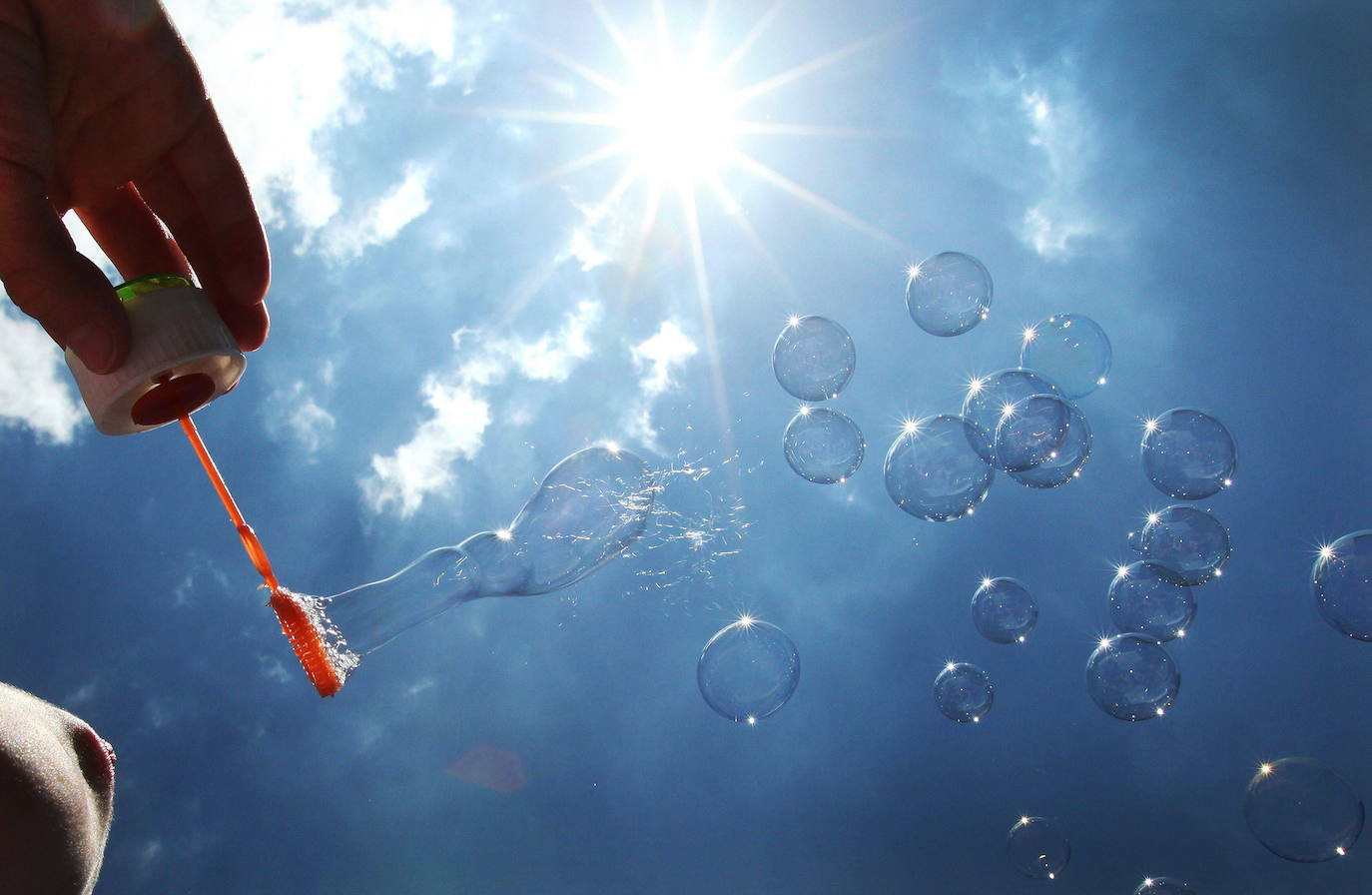Soap bubbles and films (membranes) are not only an object of fascination for children. They have been, and continue to be, an object of study in science. Even more. There are indications that they were already related to the divination rituals of Babylon and have been a source of inspiration for the painting. For example, the impressionist. In addition, the study of bubbles, in general, has a practical interest due to its many applications. They range from power to cleaning instruments to medication administration. The physics behind a bubble is complex, which is why only a few brushstrokes related to its formation and its fascination are shown here.
We will start with surface tension. In a glass of water, every molecule, except at its surface, is surrounded in all directions by water molecules. A very simple image would be a molecule in the center of a sphere made up of water molecules distributed over its surface. But, the molecules that are on the surface are only surrounded by the molecules of one half of the sphere. Those of the other half do not exist. The surface is a water-air interface. This molecular arrangement generates a surface force called surface tension. It is what causes these water-air interfaces to contract spontaneously. The surface tension of pure water is too great a force to allow bubbles to form. For example, when boiling pure water, the bubbles that are created inside break before going outside. For bubbles to form, the surface tension must be decreased. This is what the soap molecule does, which, as we saw in another pill, has a head that is attracted to water and a tail that repels it. Substances that have this property are called surfactants and the physical phenomenon that decreases surface tension is called the Marangoni effect.
JIM TILLER/AP
From here we have many other effects. For example, why are bubbles spherical? Because nature always seeks to spend, in any of its actions, the minimum energy. In the case of bubbles, it can be shown that to enclose a given volume of liquid or gas, the sphere is the geometric shape that has the smallest surface, that is, the minimum energy. Now let’s see the colors. When a soap bubble is floating there are transparent parts and others that appear colored. Why is this happening? The edge of the bubble is formed by a film of water. This water film has two surfaces, one outside and one inside. Its thickness, for different reasons, is not the same throughout the pomp. As for the light that reaches the bubble (ray of light), a part is reflected on its external surface and another part penetrates inside the film and is reflected on its internal surface.
As a consequence, it goes out again, mixing with the one that was reflected on the first surface. If the thickness of the water layer is very small, the two reflected rays interfere destructively and cancel each other out. Thus, the very thin parts of the bubble surface do not give a sensation of color (they show transparency). But in the parts of the surface where the thickness is greater, a constructive and destructive interference phenomenon occurs that gives rise to a color variation.
Let’s look at an example with three colors: blue, green, and red. For each thickness, what is canceled is a color, and therefore we receive a reflected light that is a mixture of the other two. If the blue is canceled we see a mixture of green and red that gives rise to yellow. If the green is canceled we see the mixture of blue and red that gives the magenta. And so on. This with a more extensive range of colors and taking into account the surface of the other side, generates the fantasy and fascination that bubbles produce in children and adults.






